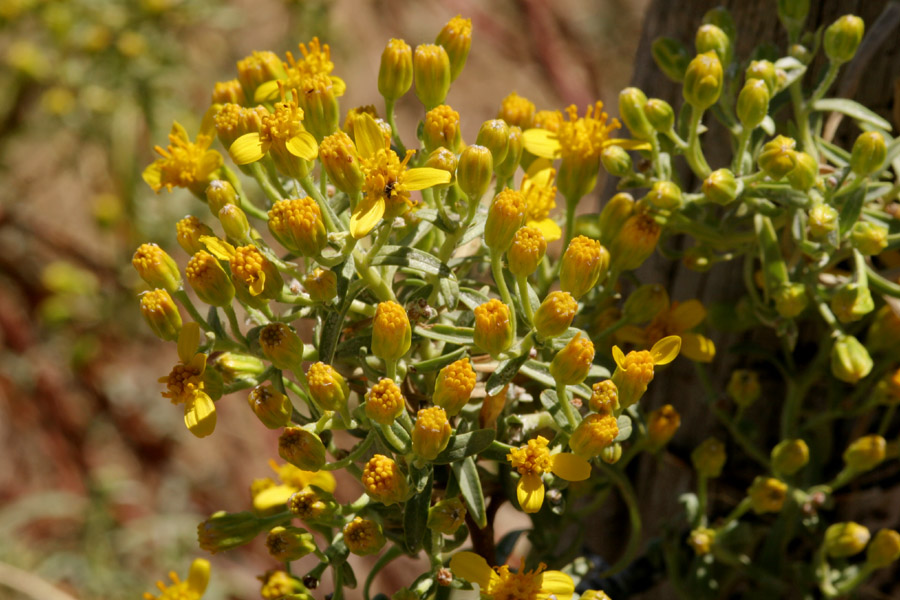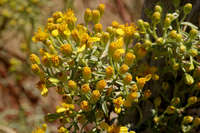Shrubs, 100-200[-400+] cm (usually glabrous, sometimes sparsely arachnose or glabrate). Stems usually 1, erect to lax. Leaves cauline; alternate (clustered distally); weakly petiolate; blades weakly 3-nerved, lance-elliptic or lanceolate to lance-linear, margins obscurely dentate to subentire or entire, faces usually glabrous. Heads radiate, in cymiform or paniculiform arrays (crowded in terminal and axillary clusters). Calyculi 0 or of 1-2+ bractlets. Involucres hemispheric or campanulate to weakly turbinate, 5-8 mm diam. Phyllaries persistent, 5-8+ in (1-)2 series, erect, distinct, elliptic or oblong to obovate, equal, margins ± scarious. Receptacles flat to convex, deeply foveolate (margins of sockets raggedly toothed), epaleate. Ray florets (3-)5(-8), pistillate, fertile; corollas yellow (laminae linear-elliptic). Disc florets 14-25+, bisexual, fertile; corollas yellow, tubes longer than to equaling narrowly funnelform throats, lobes 5, recurved, lance-linear; style branches: stigmatic areas continuous, apices ± dilated-truncate. Cypselae ± prismatic to obpyramidal, 5-nerved, strigillose to hirtellous; pappi persistent, of 60-80(-120), white, barbellulate bristles. x = 30.




